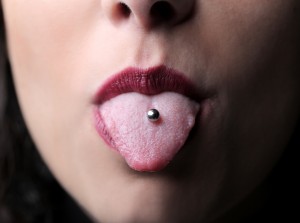 The good news is the COVID-19 pandemic did not create Dr. Internet—you know, that person in your life who watched a YouTube video, then read something on the Web, and now posts their expert opinions on Facebook, religiously. The bad news is over the last several years, the dentistry world has seen snake oil sellers come and go, too. One area of concern: Tongue Posture. Yeah, that’s a thing.
The good news is the COVID-19 pandemic did not create Dr. Internet—you know, that person in your life who watched a YouTube video, then read something on the Web, and now posts their expert opinions on Facebook, religiously. The bad news is over the last several years, the dentistry world has seen snake oil sellers come and go, too. One area of concern: Tongue Posture. Yeah, that’s a thing.
What’s true is this: When your tongue isn’t in the correct position, or when it is regularly pushing hard on your teeth, so-called orofacial (anything relating to the mouth in particular and the face in general) and other dental problems might, over time, arise.
An overview of proper tongue posture
The scientific world is clear, the tip of your tongue belongs on the roof of your mouth, just behind your front teeth when it is at rest. It should not rest low, for instance on the floor of your mouth. The dental world also holds that when swallowing, the tongue should be held against the roof of the mouth. One thing the healthcare industry notes as a concern is that some children push their tongues forward through their teeth when they swallow—called tongue thrust—and repeated, prolonged abnormal tongue positioning has been linked to tooth alignment and speech impediments.
Speech issues, treatment
A 2018 study published in the journal “Radiology and Oncology” reveals that speech dysfunctions have a causal link to poor posture of the tongue. Specifically, children with poor tongue posture have a higher incidence of something called a malocclusion—where the front teeth don’t touch when the mouth is shut. This is likely due to tongue pressure on the teeth, which can cause a change in tooth position over time.
The fancy term is “orofacial myofunctional therapy” but the everyday reality is that therapy may help people learn, correct and regularly execute the proper resting posture of the tongue. Speech-language pathologists are the pros who can be trusted with implementing this therapy. YouTube gurus not so much. However, anyone noting that children especially should be encouraged to rest their tongues in the proper position and to be aware of tongue pressure are spreading solid research-based information. The science-friendly jury has decided: Correcting improper tongue positioning can help resolve speech dysfunction.
Malocclusion that causes issues beyond speech complication can be treated with braces or other orthodontic appliances, and in rare cases, a dentist may recommend oral surgery. Surgery is the only way to reshape a jawbone that is significantly problematic.
Dr. Facebook
If you’re concerned about your tongue posture, talk to your dentist, in real life. Although many reputable dentists—like yours truly—offer research-based information via blogs or even on YouTube, even the most skeptical among us can be tricked into thinking that the friendly, well-spoken face on that professional looking video is an expert.
Your best protection from fallacy is a footnote. Just like in an academic paper, anyone on Facebook or YouTube should cite their source when making any medical claim. The American Dental Association is a also a good starting point for verifying anyone’s credentials. Look up Dentalux there!







Leave a Reply